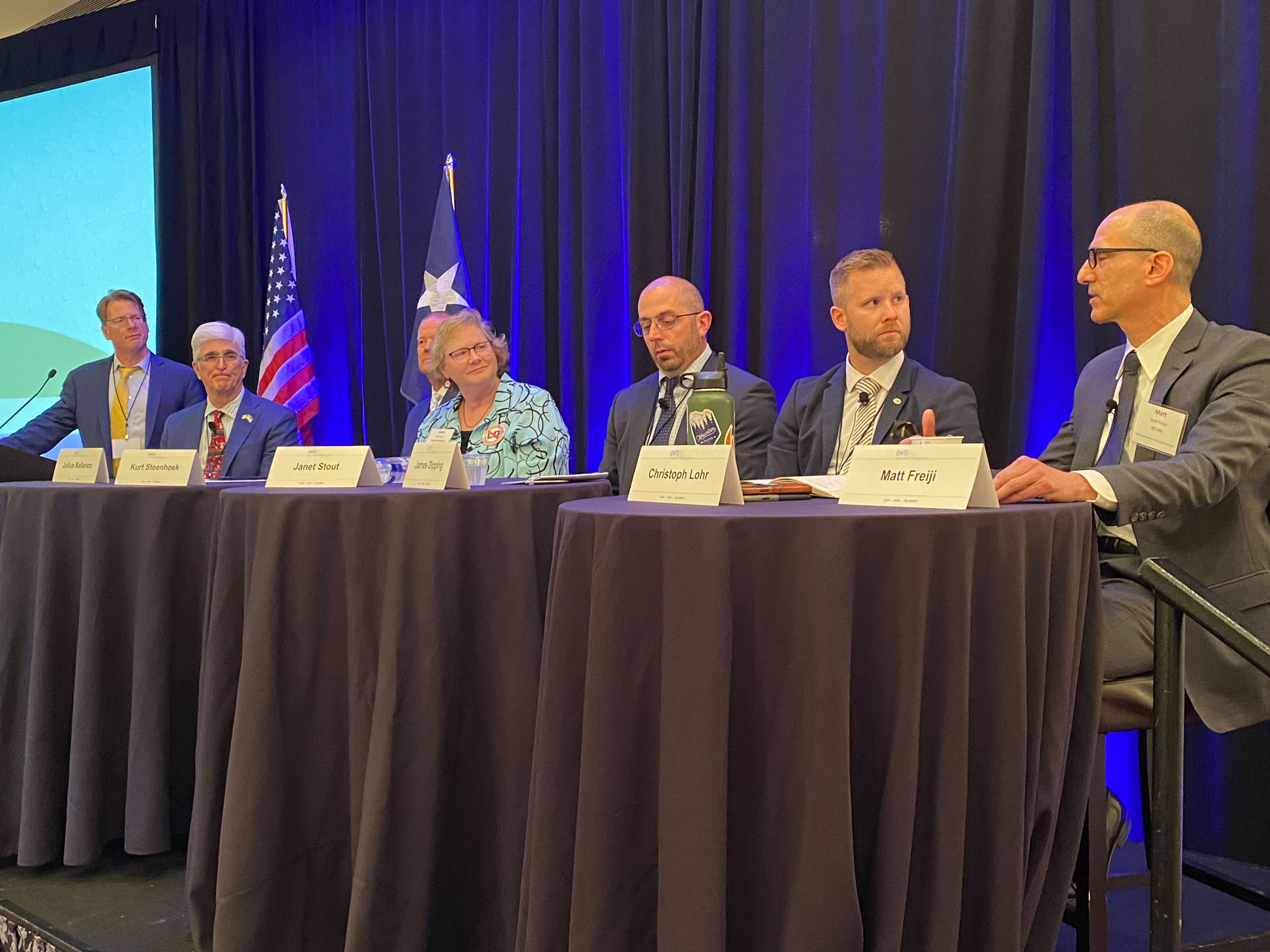
FIRST IN-PERSON EVENT SINCE 2018 FOCUSES ON SAFETY AND RESILIENCE OF PLUMBING SYSTEMS AND AMERICA’S DRINKING WATER
The seventh Emerging Water Technology Symposium returned as an in-person event for the first time in four years, bringing together industry, manufacturing, water utility and government leaders from around the world. A focus of this year’s event was on resources communities require to build safe and resilient plumbing systems as well as meet the growing list of challenges to America’s drinking water.
The May 10-11 event at the Westin Riverwalk, San Antonio was co-convened by the Alliance for Water Efficiency (AWE), the American Society of Plumbing Engineers (ASPE), the International Association of Plumbing and Mechanical Officials (IAPMO) and Plumbing Manufacturers International (PMI).
The EWTS was made possible in large part due to the following sponsors: the United Association of Journeymen and Apprentices of the Plumbing and Pipefitting Industry of the United States and Canada (UA), Kemper Water Control Systems, Viega, the National Inspection Testing and Certification Corporation (NITC), NO-DES and LeafFilter.
The moderators were John Mesenbrink, president and co-owner of Mechanical Hub media; Steven Spaulding, editor in chief of Contractor magazine and its website; Steve Smith, editor of PHC News; and Nicole Krawcke, chief editor of Plumbing & Mechanical and PM Engineer magazines. The media sponsors were BNP Media, Endeavor Business Media, PHCP Pros and Mechanical Hub media.
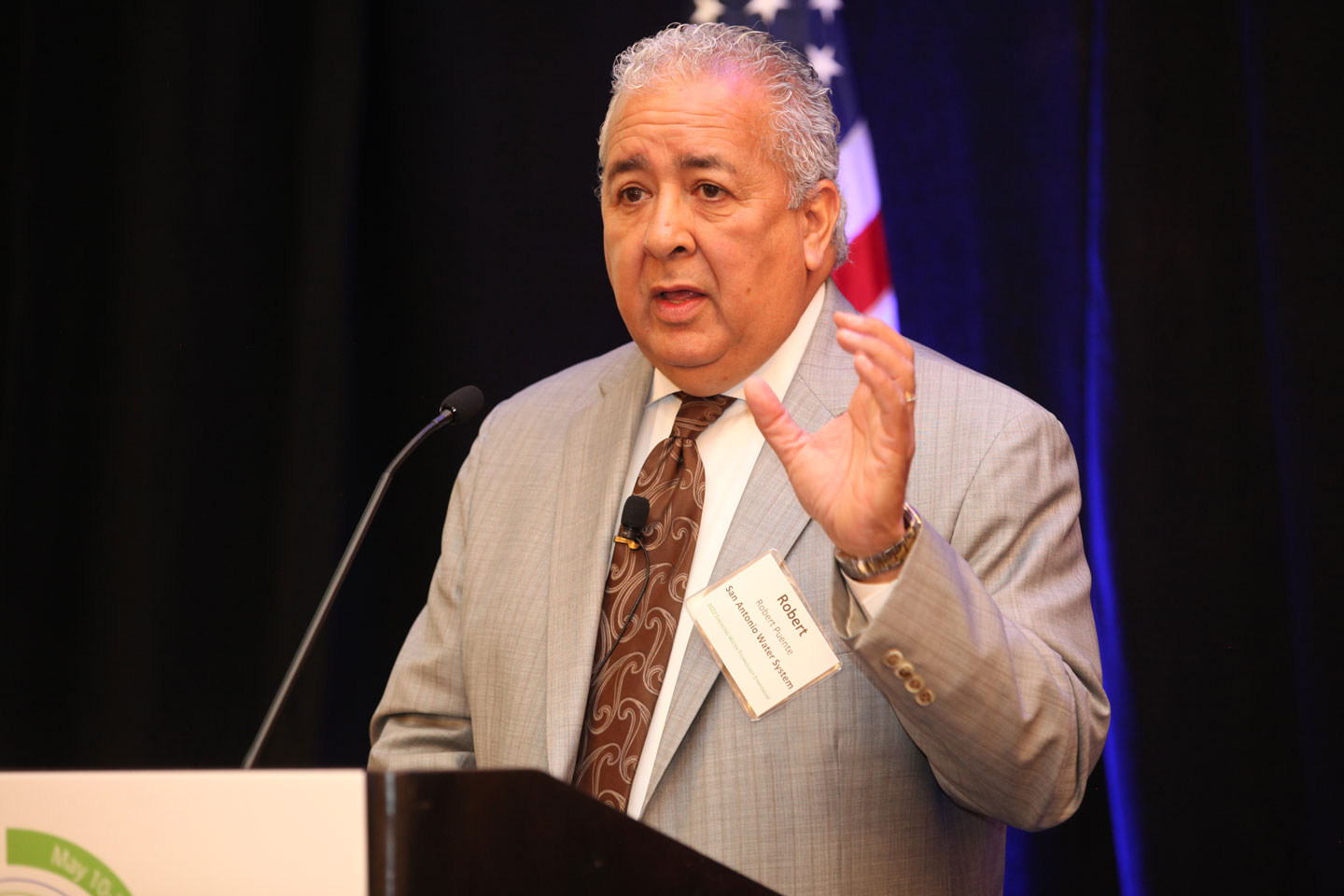
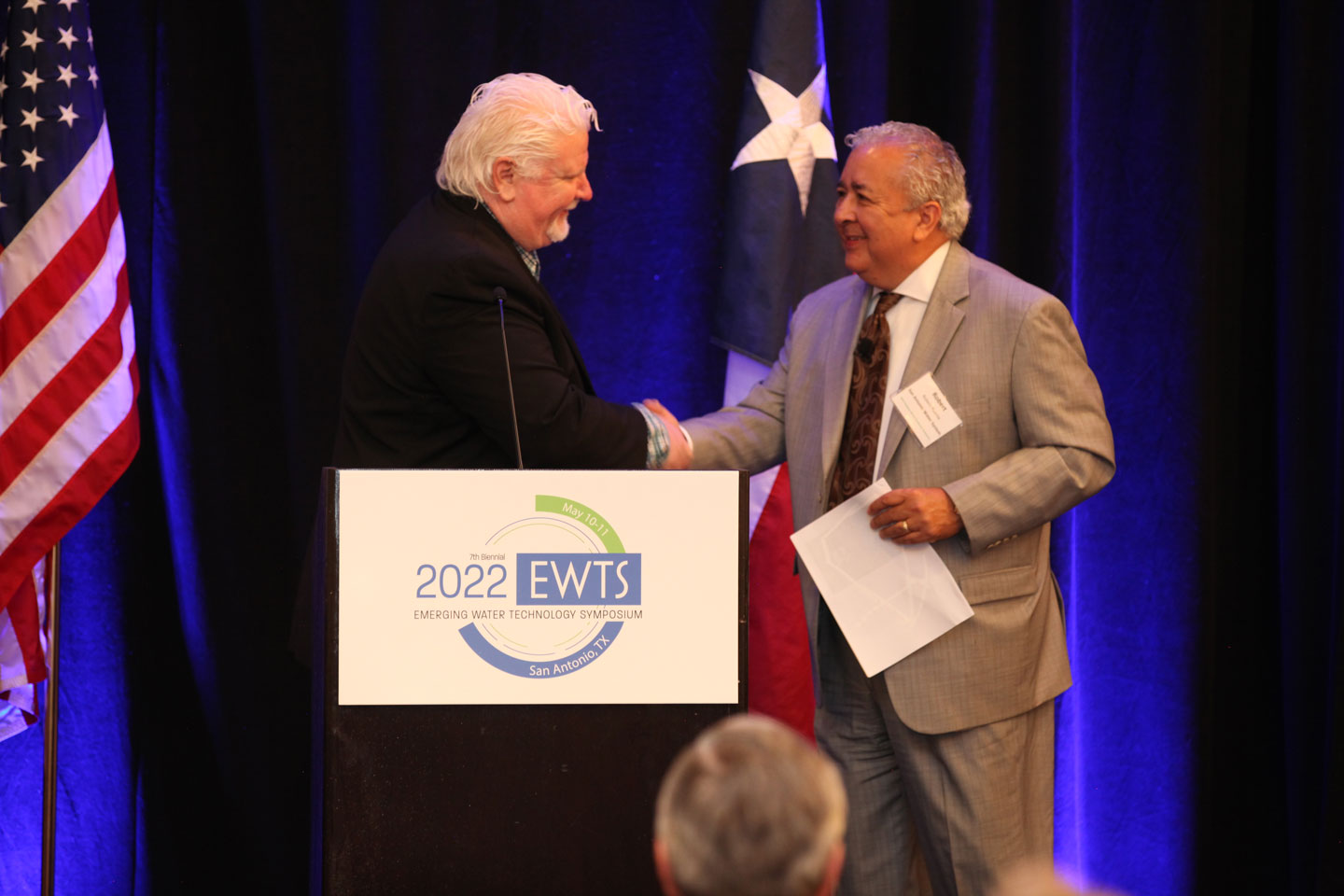
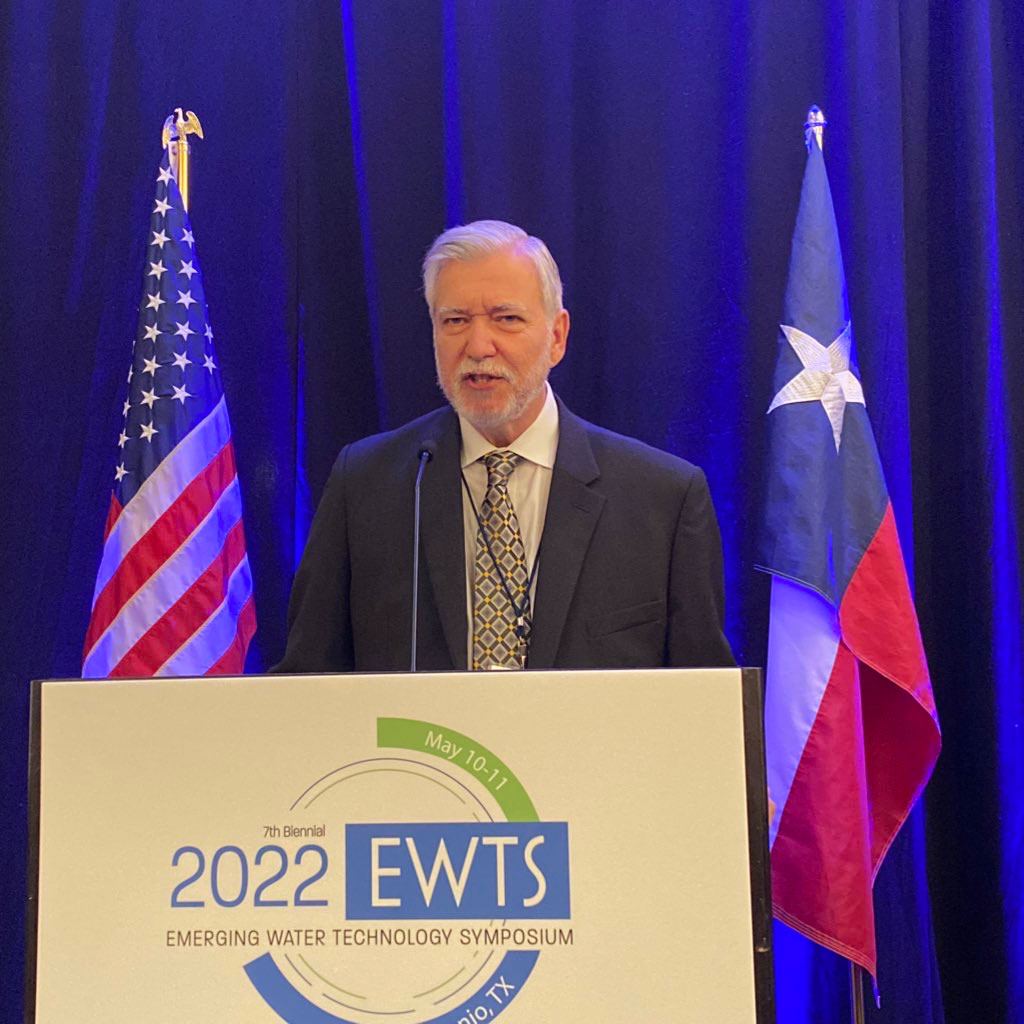
“As an industry, we have a number of high- priority research needs that relate to water quality as well as water and energy efficiency,” IAPMO Executive Vice President of Advocacy and Research Pete DeMarco explained in discussing the importance of the symposium. “This year’s event brought together some of the brightest minds industry has to offer all focused on how we make our plumbing and mechanical systems safer and more resilient to meet the challenges ahead.”
In his opening remarks, DeMarco pointed to a number of accomplishments for which the EWTS has served as a springboard, including the development of the Green Plumbing and Mechanical Code Supplement (now the Water Efficiency and Sanitation Standard WE•Stand); ANSI/ASHRAE Standard 188-2018, Legionellosis: Risk Management for Building Water Systems; ASSE 12000 series on infection control and water quality, which is in IAPMO’s Uniform Plumbing Code (UPC®); and IAPMO’s Water Demand Calculator, whose second version was released in 2020.
“This symposium provides a much-needed platform for stakeholders across the industry to gather, discuss the latest research, and then discuss how we can take action,” he said. “It is a highly valuable event, and I look forward to seeing it continue to grow in the future.”
PMI CEO Kerry Stackpole spoke at the event and said the relationships between the organizations represented at EWTS had likely never been more important than they are now. He said that while the best and brightest among us devised medical solutions to the COVID-19 pandemic, the plumbing industry also played an important role.
“What’s also important is how our industry responded,” he said. “Our industry’s experience and our focus became touchless faucets, antimicrobial surfaces, water purification systems, all kinds of energy- efficient devices focused on safe and responsible plumbing. We all had a contribution to make and I think our industry stepped up.”
tackpole said wildfires, flooding and drought that different regions of the United States are experiencing put those in the industry in a position to shape the future.
“Your active engagement here, in your communities back home, and in the market- place of ideas, where we will have opportunities to share ideas with one another, will make all the difference,” he said. “You actually are able to turn the dial on this, and I think that’s really exciting.”
This year’s keynote speakers were Robert Puente, president and CEO of the San Antonio Water System (SAWS), and Don Johnston, senior operations director, Indonesia, for Water.org.
Puente’s presentation looked at three ways in which SAWS, which serves 2 million
customers over four counties, uses innovation to deliver water to its customers: advanced metering deployment, “smart” manhole covers, and conservation.
“It’s all about innovation,” he said. “And I think if you talk to our employees, although they will tell you that it’s their idea, we know that they got their idea from coming to events like this. Every good idea, you should expect it to be stolen, to be used by someone else, and you should be flattered by that. I think anything that you look at here started some- where else, and we went to conferences in other cities and were able to bring back the ideas to SAWS to really get the innovation aspect in this.”
In delivering his keynote address remotely from Jakarta, Indonesia, Johnston spoke about the global water and sanitation crisis’s impact on low-income households — one in nine people lack access to safe water, one in three do not have access to a toilet — and some potential solutions. Working with financial institutions and water utilities, as well as sister company WaterEquity, Water.org helps bring affordable financing to people in need of water.
“In about 19 years of work on the ground, we’ve seen water and sanitation access reach more than 45 million people through more 10 million microloans disbursed to house- holds with capital of $3.7 billion mobilized,” he said.
In his presentation, Phillip White, manager of plumbing and mechanical inspections for the city of Vancouver, British Columbia, shared how his city addressed the problem of insufficient sewer capacity when it came to capturing large amounts of rainfall through water reuse technologies. One development, the Oakridge Centre, utilized the IAPMO Water Demand Calculator and is expected to have the largest non-potable water system in North America.
Another speaker, Special Pathogens Laboratory Executive Vice President/Founder Dr. Janet Stout, looked at approaches and products for mitigating the risk of Legionellosis in point- of-use and point-of-entry building water systems. Improved water management requires knowledgeable Legionella prevention and water service providers, which can come from certification to ASSE/IAPMO/ANSI 12080 for Legionella Water Safety and Management Personnel.
After her presentation, Stout, a regular participant in the event, said it was exciting to be at another in-person EWTS.
“There’s no substitute for being together in a room with other professionals who are like minded and wanting to solve the problem of ending Legionnaire’s disease,” she said.
Stout said EWTS is unique because it brings together professionals across disciplines.
“I talk a lot about solving the problem of Legionnaire’s disease requires a multi- disciplinary approach,” she said. “That’s exactly what you get at EWTS.”
Stout said that as an optimist by nature, she was able to identify a positive from the pandemic.
“Certainly, the shutdowns of buildings — whether it’s nursing homes, hospitals, commercial property — created the environment in the water that would promote Legionella to grow,” she said.
“And one measure of our progress thus far is that immediately people started thinking, ‘Oh my goodness, there are conditions in our buildings now because of the shutdowns where Legionella could grow; let’s do something about it.’ That was really some-
thing heartening to me that we’ve made such progress in terms of awareness of the risk of Legionella in building water systems that people would immediately recognize the risk.”
Sun Gil Kim, senior program officer for the Bill and Melinda Gates Foundation, gave a presentation about the nonprofit organization’s work with a large number of partners to “reinvent the toilet.”
“What amazed me was all of the speakers; there are linkages to the work we’re doing either directly or indirectly. So it’s amazing how almost every speaker has elements of the work that are directly tied to sanitation, because sanitation and water are so linked.”
For the event’s final presentation, Team HydroPuris, a group of four eighth-graders from Maryland who participated in the U.S. Army’s eCybermission competition, shared remotely the cost-effective, portable water purification, filtration and testing system, WPTS, they developed using low-cost materials that can be found locally or bought inexpensively. The materials include gravel, coconut fibers, rice husks, lemons, seaweed and sand, as well as a bacteria-killing LED light. The team conducted tests showing that its WPTS made the water 80% cleaner.
DeMarco said the EWTS lived up to its billing.
“It provided timely presentations and discussions on new technologies, research programs, and industry policy initiatives,” he said. “The discussions during the breaks and at lunch will, once again, lead to new collaborations and business opportunities that our industries will benefit from in the years ahead. It’s been an honor to help convene these symposiums. I’d be remiss without thanking my friends on the symposium’s Technical Committee — John Koeller from AWE, Ramiro Mata from ASPE and Kyle Thompson from PMI — for their work on the technical program.”
IAPMO Senior Vice President of Training and Credential Services Tony Marcello also lauded the event’s success.
“With all of the effort that the teams from the co-convening organizations put in to make this event great, I could not be happier with high level of success we enjoyed with this year’s EWTS,” he said. “I would like to express my thanks to our sponsors, all of the presenters and moderators who made up our best program ever, and to all of the attendees who made their way to San Antonio.”
IAPMO will provide sessions from the EWTS on demand in the near future. To be notified when they are available, register at www.ewts.org/2022-ewts.
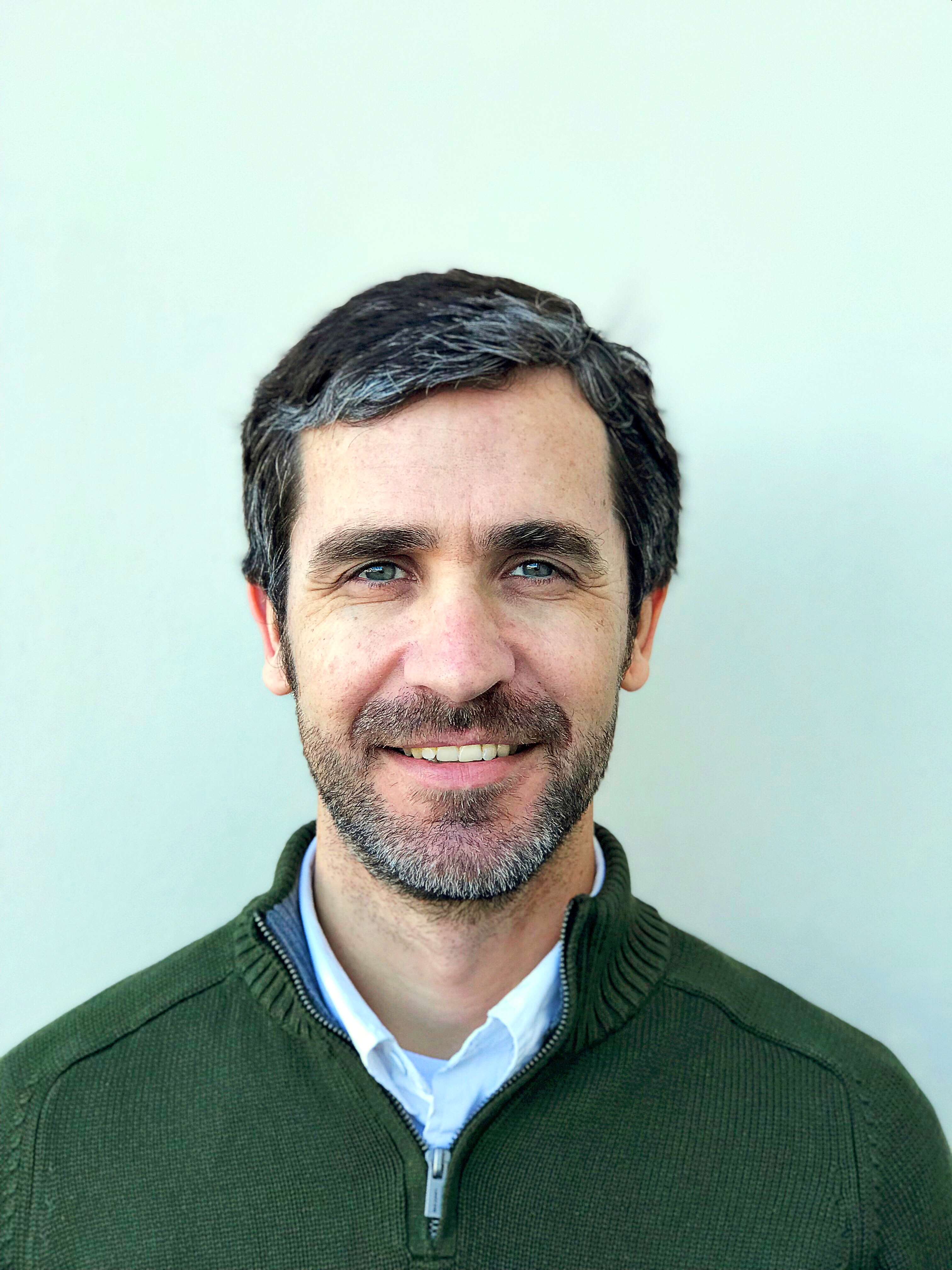
Mike Flenniken
Mike Flenniken is a staff writer, Marketing and Communications, for IAPMO. Prior to joining IAPMO in 2010, Flenniken worked in public relations for a group of Southern California hospitals and as a journalist in writing and editing capacities for various Southern California daily newspapers.
Last modified: August 12, 2022
